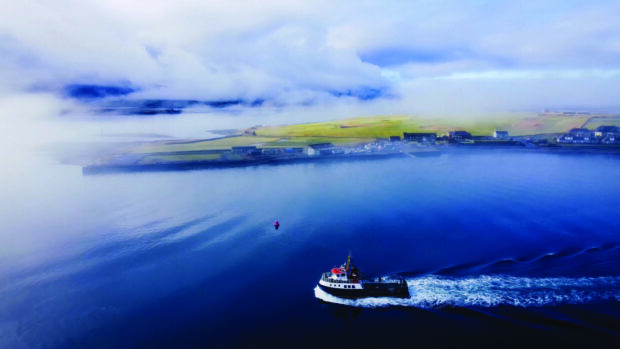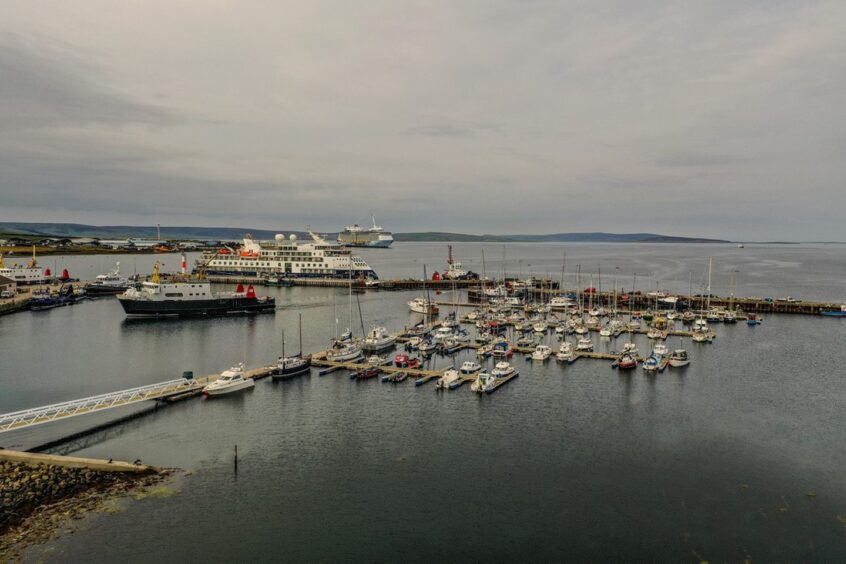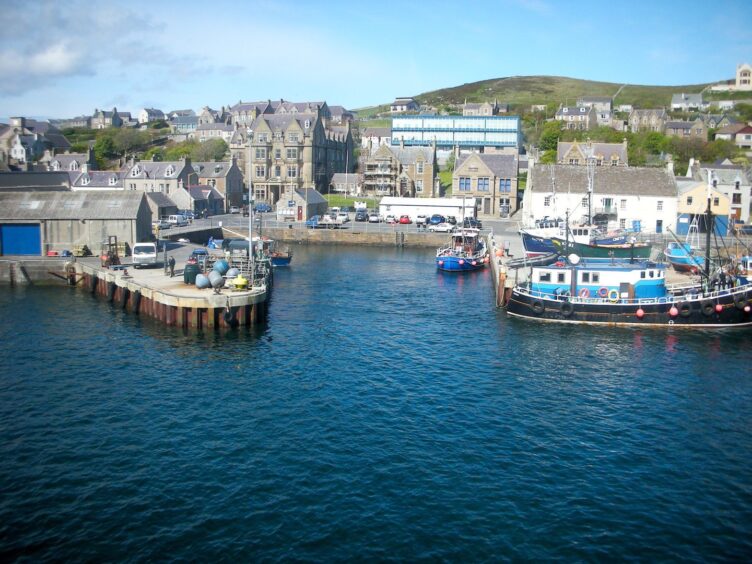Orkney Harbours are in an enviable position when it comes to harnessing the potential of the North Sea.
-
Some Press and Journal online content is funded by outside parties. The revenue from this helps to sustain our independent news gathering. You will always know if you are reading paid-for material as it will be clearly labelled as “Partnership” on the site and on social media channels.
This can take two different forms.
“Presented by”
This means the content has been paid for and produced by the named advertiser.
“In partnership with”
This means the content has been paid for and approved by the named advertiser but written and edited by our own commercial content team.
For years the ports have been at the forefront of the oil and gas sector, with crude oil moving through the Flotta Terminal since 1977. In addition, ship-to-ship operations of crude oil cargo have been conducted in Scapa Flow since 1980 and tankers have long used the site for sheltered anchorage.
However, as the transition to Net Zero continues, the need to capitalise on the new market of renewables is clear. That point is emphasised by a reduction in oil and gas coming through the Flotta terminal.
Tapping into potential of offshore wind
The clearest opportunity in the North Sea renewables sector undoubtedly comes from offshore wind. But the ports face a number of challenges to fully harnessing that potential, not least the financial aspect.
Paul Olvhoj business development manager at Orkney Harbours, said: “Offshore Wind is obviously the main opportunity for us going forward. The huge scale of developments planned in Scotwind / INTOG and others on paper provides a strong income stream for the supply chain as it transitions from fossil fuels. However, the technical and financial challenges for these are placing a burden on business owners, in particularly ports. The demand for infrastructure projects to be fast tracked in time to support developments prior to contractual agreements means that investment is a major hurdle.”
Scapa and Hatston key to progress
That need for investment is particularly relevant to Orkney Harbours two biggest projects – Scapa Deep Water Quay and Hatston Pier. Scapa Deep Water Quay will provide a large laydown area in Scapa Flow, close to planned wet storage locations.
Hatston Pier will see the creation of nearly 8Ha of new land behind an extended quay and will focus on multi-use users, incorporating the existing ferry and cruise operations and providing operations and maintenance services for the offshore wind and renewable energy markets.
Paul continued: “Our main projects that will unlock supply chain potential from offshore wind – at Scapa Deep Water Quay and Hatston Pier both need significant investment beyond what a local authority (and the smallest one in Scotland) can take as a risk. The projects themselves are both in the planning process and final decision is due at the end of the year all going well. This is the first hurdle that we have to negotiate – the money to enable the projects to be developed is still to be sourced and only when there is success in these can a final decision be made by Orkney Islands Council.”
Orkney has always been at the forefront of renewable energy and north Scotland is the prime location for the deployment of devices. With the market moving towards a more commercial footprint Orkney Harbours has an opportunity to support and grow with the sector.
Smaller sites will also be vital
Outside of Scapa Deep Water Quay and Hatston Pier, Lyness is seen as a potential base for operations, in particular storage, for a wide range of users. Working with the local supply chain, the Orkney Future Ports team are developing plans to provide support for projects over the coming months and harness renewable energy’s potential.
Paul said: “The Orkney Future Ports umbrella of projects covers not only the above but a range of other smaller projects in the marine environment that will look to improve in a sustainable and environmentally fair manner some of our locations. This will also lead into the next phase of the masterplan which will look at the infrastructure for a potential new ferry fleet.”
Oil and Gas still has big part to play
Although the throughput at Flotta is decreasing, Orkney Harbours are still the premier safe location for ship-to-ship of oil and gas products and have a strong portfolio of clients that see Scapa Flow as the best place to operate.
Paul added: “Our new tugs are working here and further afield with 100% safety record and provide a reassurance to clients that we have a powerful fleet with experienced crews capable of servicing their vessels. We were delighted to welcome the FPSO Western Isles into Scapa Flow in July for a period of refitting prior to redeployment to a new field. This will benefit our local supply chain and show that we are capable of handling larger projects, safely in our waters.”
Smooth sailing for ferries and cruise
The Zero Emission and Infrastructure (ZEVI) funded new ferry will be arriving in Orkney later this year (with a larger version in 2025). These will be trialled on some of the island routes, opening up opportunities for some remoter locations.
After a record-breaking 2024, the cruise sector continues to go from strength to strength too with more than 200 calls expected in a variety of locations around the islands. In addition, Orkney Harbours have joined the Environmental Port Index (EPI) the data from which will help them develop a sustainable tourism sector.
Paul said: “We have welcomed over 40 separate lines calling here to enjoy our amazing history, scenic and natural beauty, shops and communities. As well as the larger vessels, small cruise ships have visited some of our outer isles that have not experienced cruise before, bringing a little tourism boost to these locations. Managing over 200,000 visitors from cruise is a challenge and our professional teams work tirelessly to ensure that the best welcome is given.”
To find out more about developments on the islands, visit the Orkney Harbours website.




